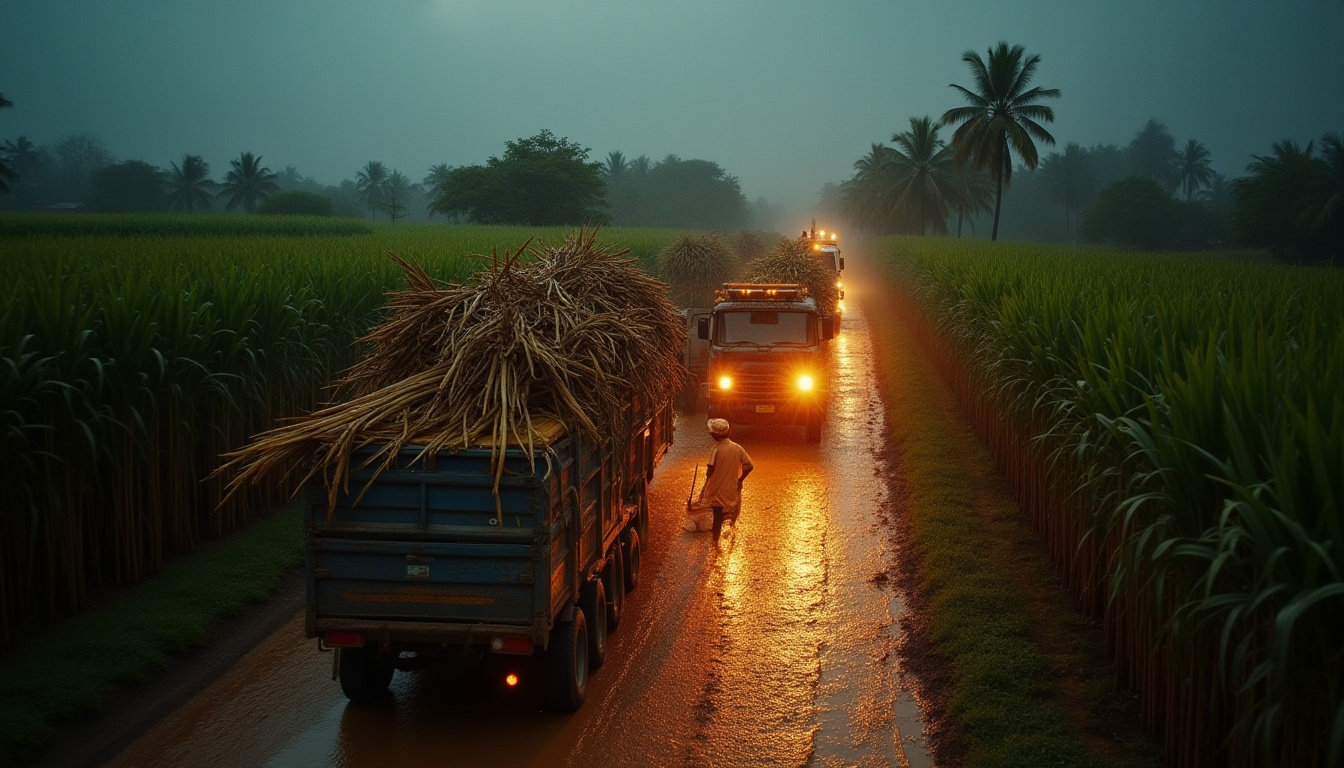Introduction to Off-Road Trucks Off-road trucks represent a special category of vehicles...
Billion Tons of Sugarcane: The Art & Science of Sugar Production
Sugarcane, a towering tropical grass, is the backbone of global sugar production, yielding nearly 80% of the world’s sugar supply. In 2022, global sugarcane production reached 1.92 billion tonnes, with Brazil and India leading the charge, producing 38% and 23% respectively. The journey from field to table is a marvel of agricultural and industrial precision, transforming fibrous stalks into the sweet granules we know as sugar. This article delves into the intricate process of harvesting and processing billions of tons of sugarcane to produce raw sugar, a staple in households and industries worldwide.

Harvesting Sugarcane: From Field to Factory
Sugarcane thrives in tropical and subtropical climates, requiring warm temperatures (75°F average) and substantial water (80-90 inches annually). Countries like Brazil, India, and the United States (Florida, Louisiana, Texas) cultivate vast plantations. Harvesting occurs when sucrose levels peak, typically during the dry season from June to December in places like Australia, or year-round in regions like Cuba and the Philippines. About two-thirds of global sugarcane is still harvested manually with machetes, especially in labor-abundant regions, though mechanical harvesters are increasingly common in industrialized nations like the U.S., where single-row combine-style machines cut stalks into 30cm billets for efficient transport.The harvested cane, rich in sucrose (12-16% of stalk composition), is transported within 16 hours to mills to prevent sugar deterioration. Transport methods vary—trucks, railcars, or even oxcarts carry cane up to 25 km to processing facilities. In the U.S., companies like U.S. Sugar utilize private railroads, moving 40-ton railcars to reduce road congestion and emissions.
Processing Sugarcane: Extracting the Sweet Essence
At the mill, sugarcane undergoes a multi-step process to extract raw sugar. First, stalks are weighed, unloaded, and cleaned to remove soil and debris, often using water sprays or agitating conveyors. The cane is then shredded and crushed through roller mills to extract juice, which contains sucrose, water (63-73%), and non-sugar impurities. The leftover fibrous material, bagasse, is burned to power mill furnaces or used for biofuel, paper, or animal bedding.
The extracted juice is clarified by heating (99-104°C) and adding lime to neutralize acidity (pH 5.0-6.5), forming insoluble calcium saccharate that traps impurities. Flocculants like polyacrylamides aid sedimentation in clarification vessels, separating clear juice from mud. The clarified juice is concentrated into syrup through evaporation under vacuum, reducing water content. Tiny sugar “seed” crystals are introduced to initiate crystallization, and the mixture is spun in centrifuges to separate golden raw sugar crystals from molasses, a syrupy byproduct used for ethanol, animal feed, or rum production.

Refining Raw Sugar: From Mill to Market
Raw sugar, coated with molasses, is often shipped to refineries for further processing. At refineries, it’s mixed with hot syrup to soften the molasses layer, spun again to remove it, and dissolved into a colorless syrup. This syrup is filtered, evaporated, and crystallized to produce refined white sugar, which is dried and packaged as granulated, coarse, or superfine sugar. Brown sugars retain varying molasses levels for distinct flavors.
Sustainability and Byproducts
The sugarcane industry is resource-intensive but increasingly sustainable. Bagasse powers mills, reducing fossil fuel reliance, while molasses fuels bioethanol production, notably in Brazil, where sugarcane ethanol powers millions of vehicles. However, challenges like habitat loss, water pollution from mill effluents, and labor issues, such as high hysterectomy rates among female workers in India, highlight the need for sustainable practices like those promoted by Bonsucro certification.
Conclusion
Harvesting and processing billions of tons of sugarcane is a complex, energy-intensive process that transforms a humble grass into a global commodity. From manual harvests to high-tech mills, the journey of raw sugar production reflects both tradition and innovation, fueling economies and kitchens worldwide.
Don't miss those
Inside Toyota’s Visionary Factory: Shaping the...
When it comes to innovation in the automotive industry, Toyota stands tall...
The Art of Hand-Building Rolls-Royce’s Iconic...
Rolls-Royce is synonymous with luxury, precision, and unparalleled engineering. At the heart...
Real-Life Superhuman Moments Captured on Camera
In a world where challenges often seem overwhelming, glimpses of real-life heroes...
Billion Tons of Sugarcane: The Art...
Sugarcane, a towering tropical grass, is the backbone of global sugar production,...
U.S. Navy Pioneers Aerial Refueling Drone...
On August 23, 2025, the United States Navy marked a historic milestone...







